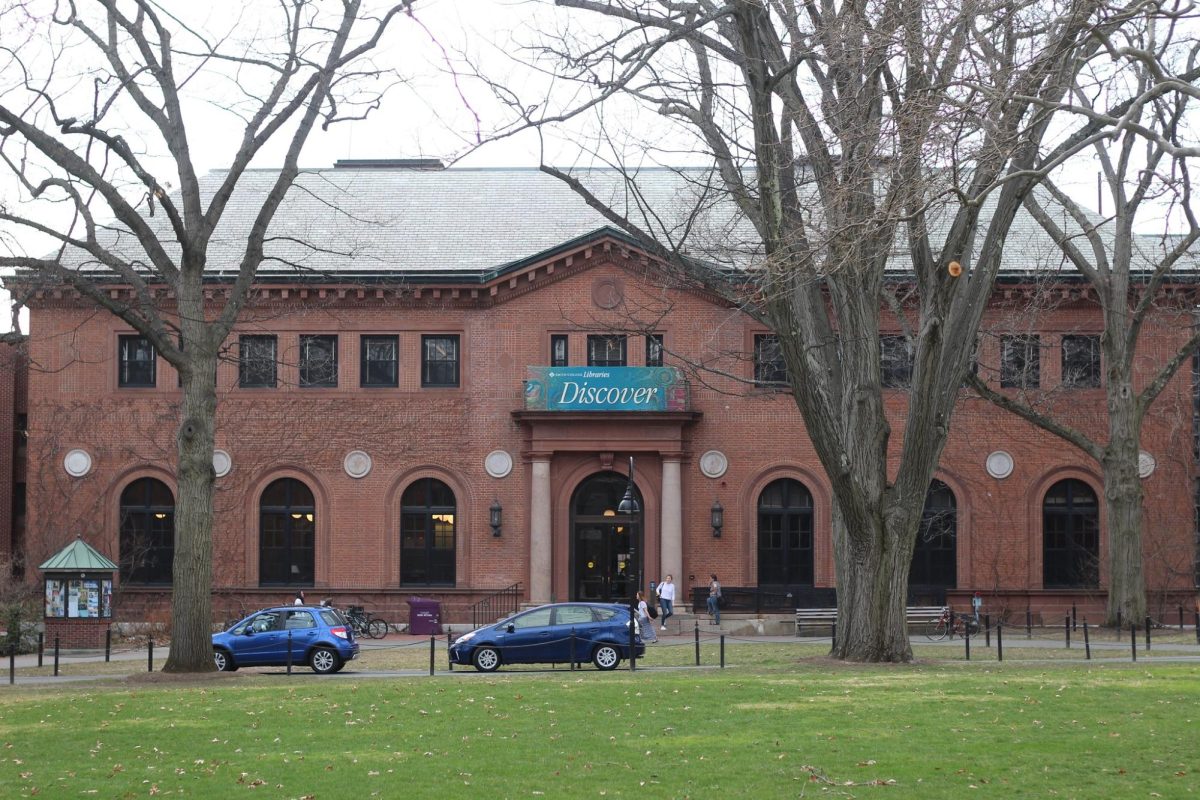The Gateway Development Project – which aims to build a mixed-use development on a now vacant lot on Amherst’s North Pleasant Street, where the University of Massachusetts’ fraternity row once stood, inched closer to becoming a reailty before spring break, when the Amherst Redevelopment Authority (ARA) hired ACP Visioning & Planning of Columbus, Ohio to consult on the project.
“The process is really just beginning,” said John Coull, chair of the ARA. “Everything is on the table, and nothing is off the table.”
UMass bought the 1.86-acre piece of land from the national Alpha Tau Gamma fraternity in 2007 and had the houses torn down. The lot has been empty ever since.
“The main thing the University wants to get out of it is to create an attractive link between campus and downtown,” said UMass Deputy Chancellor Todd Diacon. “We think an attractive development will help recruit students and their parents.”
Larry Kelley, an Amherst accountant and ARA member, said the presence of Diacon and Nancy Buffone, the executive director of external relations and university events, at ARA meetings is “how I know UMass is serious about this.” He added that the Gateway Project is the closest he’s ever seen the town and the University work together.
Diacon said that the next step in the project is the visioning process. ACP will try to get many different views from “stakeholders” – neighbors, students, university faculty, administration, staff and others who might be affected by the project – as possible. He added that other properties in the “Gateway corridor” – both sides of North Pleasant Street from the intersection with Massachusetts Avenue to Kendrick Park – were under consideration for inclusion in the project.
Last September, the University and the town signed an agreement called the “University of Massachusetts – Town of Amherst Gateway Redevelopment Project Partnership to Expand and Improve Housing.” The agreement outlined the reasons for working together, with the two main points being that “the availability and affordability of quality housing directly affects the ability of the University of Massachusetts Amherst to attract and retain students and . . . The Town of Amherst needs to develop improvements to the tax base.” The agreement also stated that the school and the town would be “full partners” in the process.
“The Redevelopment Authority has lots of discretion,” Coull said.
Kelley expanded on that, saying that the ARA has eminent domain power, which allows them to take properties needed for the project. “The town has eminent domain, but it takes them forever to use it,” he said.
Coull said that students will be consulted “early in the process, to make sure they’re included.” After the visioning process is complete, he said, ACP will produce a “charrette,” or model of the proposal in the next three months, then the ARA will go to Town Meeting, either in the fall or next spring, and request that the area be rezoned for mixed-use development. If Town Meeting members approve the change, then the University will apply to the Massachusetts General Court for permission to give the property to the town.
“The state has oversight over its own property and we need special permission to dispose of it,” Diacon said.
Kelley said the project is potentially worth millions of dollars in tax revenue for the town. “The frats were privately owned; they paid the town taxes,” he said, but UMass, except for the UMass Hotel at the Campus Center, is tax exempt. According to Kelley, around half of the property in Amherst is owned by tax exempt organizations, with the three largest tax exempt entities being Amherst College, UMass and the town itself. He added that while the University does pay an annual sum to the town instead of taxes, the amount is very small compared to that of other schools.
He compared the proposed mixed-use development to the Village Commons in South Hadley, which is a development across the street from the Mount Holyoke College campus. Except, he noted, the Amherst proposal is “10 times bigger and better.”
Kelley envisions the development as having retail and office space, as well as restaurants and some high-end student housing. “I’m going to work very hard to make sure it happens,” he said.
The main obstacle to the project, Kelley noted, is that zoning changes require the approval of two-thirds of Town Meeting members.
“There are folks who want it to remain an open field,” Kelley said. “All they need to do is convince 60 to 65 people to say ‘no.’”
He said that the people who oppose the Gateway project are worried that any new student housing will be like fraternity row or Hobart Lane – a street in North Amherst that has become known for its raucous atmosphere.
According to the Amherst Bulletin, a group of residents formed “Amherst Citizens Concerned About Gateway” and submitted a petition to the Amherst Select Board asking them not to appropriate the money needed to hire the consulting firm. John Fox, a Fearing Street resident associated with the group, could not be reached for comment.
“The process is really about to start,” Coull said. “Right now it’s a big emphasis on process.”
“UMass can do anything they damn well please there,” Kelley added. “They’re a thousand-pound gorilla and the town is a 50-pound chimpanzee.”
Diacon told the Amherst Bulletin in December that if the zoning changes aren’t approved, UMass will probably undertake the project alone.
Matthew M. Robare can be reached at [email protected].







Larry Kelley • Mar 21, 2011 at 3:25 pm
Slight correction: I’m not an “accountant” (former health club owner/manager). And while I sound anxious to use it, I can assure you the ARA (or town for that matter) has no plans to actually use the power of eminent domain to take adjacent properties. Frat Row alone can support a major project.
Other than that, nice job Matt. For an update:
http://onlyintherepublicofamherst.blogspot.com/2011/03/site-visit-to-behold.html